arched or vaulted Ctenocardia
Ctenocardia fornicata
Ctenocardia fornicata is a subtidal infaunal bivalve found offshore in the Pilbara area. The newly described C. pilbaraensis was previously confused with this species because of the close similarity in morphological features.
Morphology
It is medium sized (20-39 mm length) and solid, quite quadrate or square with 37-44 squarish ribs with elaborate ornamentation including erect top spines, spinose scales or small bilateral spines. Exterior base color cream with brown red markings and splotches, interior with shades of yellow, orange or pink and reflective of exterior coloration.
Evolution
Little is known about the relationship of this species to other members of the genus.
Behaviour
This species, like all cardiids, is shallowly infaunal and will reburrow if disturbed. It is related to photosymbiotic fragines but is not itself photosymbiotic.
Method of reproduction
Broadcast spawner.
Habitat
Marine
Subtidal infaunal in coarse sand, silt
Distribution
It is a wide ranging Indo-west Pacific species. In Western Australia, the distribution of C. fornicata is now clarified as being restricted to offshore shoals and atolls and it is currently only known from Scott Reef.
| Kingdom: | Animalia |
|---|---|
| Phylum: | Mollusca |
| Class: | Bivalvia |
| Subclass: | Heterodonta |
| Superorder: | Imparidentia |
| Superfamily: | Cardioidea |
| Family: | Cardiidae |
| Genus: | Ctenocardia |
| Species: | fornicata |
| Name Published Year: | 1840 |
|---|---|
| Scientific Name Authorship: | G.B. Sowerby II |
| Commercial Impact: | None |
| Conservation Assessment: | Least Concern |
Cite this page
Western Australian Museum Collections https://museum.wa.gov.au/online-collections/names/Ctenocardia-fornicata
Accessed 7 Dec 2025
Rights
We support the open release of data and information about our collections.
Text content on this page is licensed under a Creative Commons Attribution 4.0 International License.
Image content on this page is copyright WA Museum.


